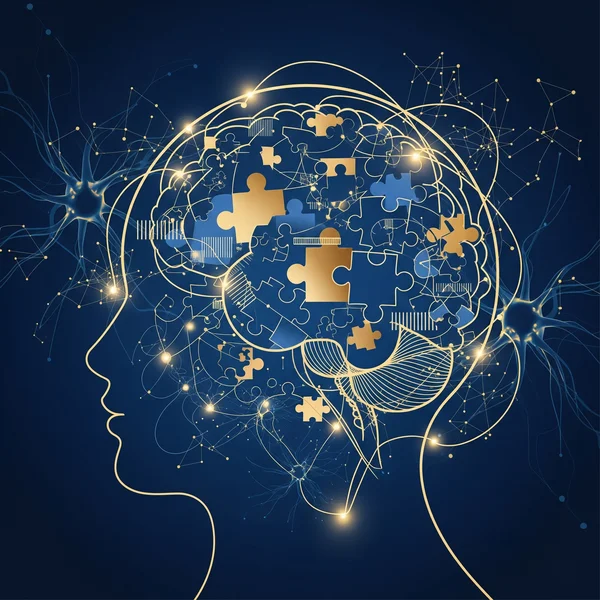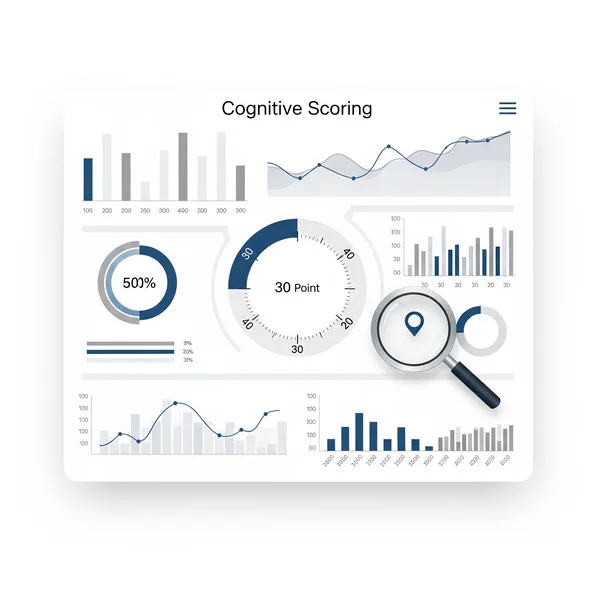The Ultimate Guide to the Montreal Cognitive Assessment (MoCA)
The Montreal Cognitive Assessment, widely known as the MoCA test, stands as a cornerstone in modern neuropsychological testing. But what is the Montreal Cognitive Assessment, and why has it become so critical for clinicians and researchers? This comprehensive guide will walk you through every aspect of the MoCA, from its core purpose and scoring intricacies to its limitations in a fast-evolving digital world. For professionals seeking the most advanced and efficient screening methods, it's crucial to understand both the foundation and the future of cognitive health screening. Discover the next generation of cognitive assessment tools that build upon this legacy.

What Is the Montreal Cognitive Assessment (MoCA)?
The MoCA is a brief, 30-point screening tool designed to detect mild cognitive impairment (MCI), a condition that can be a precursor to dementia and other neurodegenerative diseases. Developed by Dr. Ziad Nasreddine in 1996 and validated in Montreal, Quebec, it has since become a global standard for its sensitivity in identifying cognitive deficits that might be missed by other screeners like the Mini-Mental State Examination (MMSE).
A Brief History: From Concept to Clinical Standard
The initial goal was to create a tool that was more sensitive than existing options for detecting the subtle signs of MCI. Its widespread adoption is a testament to its effectiveness, providing a standardized, quick, and reliable method for an initial patient assessment.
Primary Goal: Screening for Mild Cognitive Impairment (MCI)
So, what does the MoCA test for? Its primary function is not to diagnose, but to screen. A low score on the MoCA prompts a clinician to conduct a more thorough diagnostic workup. It's an essential first step in identifying individuals who may be at risk, allowing for earlier intervention and planning.
A Breakdown of the Cognitive Domains Assessed by MoCA
The MoCA's strength lies in its comprehensive evaluation of multiple cognitive domains. Unlike simpler screens, it provides a more holistic view of an individual's cognitive health.
Visuospatial and Executive Functions
This section tests skills like organization, planning, and visual perception. Tasks include a trail-making test, copying a cube, and a clock-drawing task. Strong visuospatial abilities are critical for daily activities like navigating and orienting oneself.
Memory and Delayed Recall
This is a crucial component. The test administrator reads a list of five words, and the patient is asked to recall them immediately and then again after a few minutes. This assesses short-term memory and the ability for delayed recall, a common area of concern in MCI.
Attention, Concentration, and Working Memory
Tasks in this domain include a digit span test (forward and backward), a target detection task (tapping a hand for a specific letter), and a serial subtraction task. These functions are fundamental to nearly all higher-level cognitive processes.
Language Abilities
The MoCA assesses several aspects of language, including repeating complex sentences, verbal fluency (naming as many animals as possible in one minute), and naming line drawings of less common animals (lion, rhinoceros, camel).
Mastering the MoCA Test Scoring: A Step-by-Step Guide
Understanding the scoring is vital for accurate interpretation. So, what is considered a normal score on the MoCA? A score of 26 or above is generally considered normal.

Administering the Test: Best Practices for Accuracy
For the results to be valid, the test must be administered in a quiet, distraction-free environment. The administrator should follow the standardized instructions precisely without giving clues. The entire Moca exam typically takes about 10-15 minutes to complete.
Understanding the 30-Point Scoring System
Each of the tasks within the cognitive domains is assigned a specific point value, all adding up to a total of 30 points. The scoring is clearly outlined on the test sheet, making it a straightforward process for a trained professional.
The Education Adjustment: When and Why to Add a Point
A unique feature of the MoCA is the adjustment for education level. If an individual has 12 years or less of formal education, one point is added to their final score. This helps to correct for any potential bias and improves the accuracy of the cognitive screening.
Interpreting the Results: What MoCA Scores Indicate
- 26-30: Normal cognitive function.
- 18-25: Mild cognitive impairment (MCI).
- 10-17: Moderate cognitive impairment.
- <10: Severe cognitive impairment. It's critical to remember these are guidelines; a score should always be interpreted within the full clinical context of the patient.
Finding the MoCA Test PDF: Official Sources and Ethical Use
Many professionals ask, where can I find the MoCA test PDF? The official MoCA test materials and instructions are available on the official website, mocatest.org. It is mandatory to complete their official training and certification program to administer, score, and use the MoCA test ethically and accurately. Using unauthorized copies can lead to invalid results and misinterpretation.
The Next Generation: Are There Digital Alternatives to MoCA?
While the MoCA is an excellent pen-and-paper test, the field of neuropsychological testing is rapidly advancing. The limitations of traditional methods are becoming more apparent, paving the way for more sophisticated solutions.

Acknowledging the Limitations: Challenges of Pen-and-Paper Tests
Traditional tests like the MoCA, while valuable, have inherent challenges:
- Administrator Variability: Subtle differences in how the test is administered can affect scores.
- Subjective Scoring: Tasks like clock drawing can have an element of subjectivity in scoring.
- Time-Consuming: The manual process of scoring and data entry is inefficient for busy clinics.
- Learning Effect: Patients can "learn" the test if it's administered repeatedly, reducing its accuracy for tracking changes over time.
Why Go Digital? The Advantages of FDA-Approved Tools Like CANTAB
This is where the power of modern technology comes in. Digital platforms offer a solution to these challenges. A digital cognitive assessment provides highly standardized administration, automated and objective scoring, and instant data analysis. For example, FDA-cleared tools like CANTAB offer language-independent, culturally neutral assessments that minimize the learning effect, making them ideal for longitudinal studies and diverse patient populations.
Improving Accuracy and Patient Engagement with Cognivue and BrainCheck

Furthermore, digital tools can enhance the patient experience. Platforms like Cognivue use adaptive, game-like technology that can feel less like a test and more like an engaging activity, which is particularly beneficial for anxious patients or those with attention difficulties. Others, like BrainCheck, provide rapid, comprehensive reports that can be easily integrated into a clinician's workflow. If you're looking to elevate your practice beyond traditional methods, you should explore the benefits of a modern cognitive assessment.
The Role of MoCA and the Future of Cognitive Assessment
The Montreal Cognitive Assessment (MoCA) remains a vital and respected tool in the world of cognitive health. It provides a crucial, accessible method for initial screening. However, as technology progresses, we must recognize its limitations and embrace the future.
Digital assessment platforms are not just replacing paper; they are enhancing our ability to detect, track, and understand cognitive function with unprecedented precision and efficiency. They represent the next logical step in providing the best possible care for patients.
Are you ready to see how digital tools can transform your clinical practice or research? We invite you to learn more about our scientifically validated assessment solutions.
Frequently Asked Questions about the MoCA Test
What is considered a normal score on the MoCA?
A score of 26 out of 30 or higher is generally considered to be within the normal range. However, this score should always be interpreted by a qualified healthcare professional who considers the individual's full clinical picture, including their education level.
How long does the MoCA test take to administer?
The MoCA is designed to be a brief screening tool. On average, it takes about 10 to 15 minutes to complete, making it a practical choice for busy clinical settings.
Who is qualified to administer the MoCA test?
The MoCA test should only be administered and scored by healthcare professionals who have completed the official training and certification program available on the MoCA website. This ensures the test is conducted properly and the results are interpreted accurately.
What is the main difference between MoCA and the Mini-Cog or MMSE?
The primary difference is sensitivity. The MoCA was specifically designed to be more sensitive in detecting mild cognitive impairment (MCI) compared to the MMSE. It assesses more complex cognitive domains, such as executive function and higher-level language skills, which are often affected in the early stages of cognitive decline. The Mini-Cog is an even shorter screen, primarily focused on memory and clock-drawing. For a more detailed comparison and to find the right tool for your needs, you can explore a range of cognitive assessment examples.